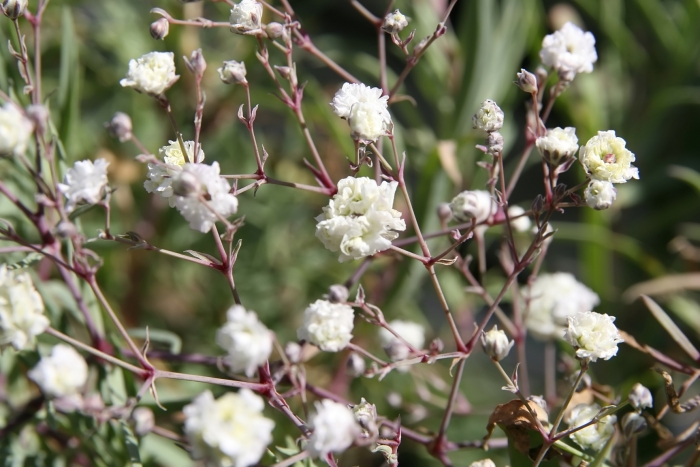Baby’s Breath
(Gypsophila paniculata)
Baby’s Breath (Gypsophila paniculata)
/
/

Photo by David J. Stang
CC BY-SA 4.0





























































Estimated Native Range
Summary
Baby’s Breath thrives in well-drained alkaline to neutral soils and requires full sun exposure to flourish. It is drought-tolerant, needing only low amounts of water once established, making it a low-maintenance choice for gardeners. ’Rosenschleier’, a cultivar with pale pink double flowers, has been awarded the Royal Horticultural Society’s Award of Garden Merit. While it is a popular ornamental plant, Gypsophila paniculata can become invasive outside its native range, particularly in regions like California, and should be planted with caution.CC BY-SA 4.0
Plant Description
- Plant Type: Herb
- Height: 2-3 feet
- Width: 2-3 feet
- Growth Rate: Moderate
- Flower Color: Pink, White
- Flowering Season: Spring, Summer
- Leaf Retention: Deciduous
Growth Requirements
- Sun: Full Sun
- Water: Low
- Drainage: Slow, Medium, Fast
Common Uses
Bee Garden, Border Plant, Butterfly Garden, Deer Resistant, Drought Tolerant, Low Maintenance, Potted Plant, Rock Garden, Salt Tolerant, Showy Flowers, Water Garden
Natural Habitat
Steppes, meadows, and gypsiferous soils in Eastern Europe and Asia
Other Names
Common Names: Perennial Baby’s-Breath, Common Gypsophila, Panicled Baby’s-Breath, Tall Baby’s-Breath, Baby’s-Breath, Rispiges Gipskraut, Scheierkraut, Gypsophile Paniculée, Oeillet D’Amour, Brouillard
Scientific Names: , Gypsophila paniculata, Gypsophila hungarica, Gypsophila effusa, Gypsophila paniculata var. adenopoda, Gypsophila manginii, Gypsophila parviflora, Arrostia paniculata, Gypsophila myriantha, Gypsophila paniculata subsp. paniculata
GBIF Accepted Name: Gypsophila paniculata L.